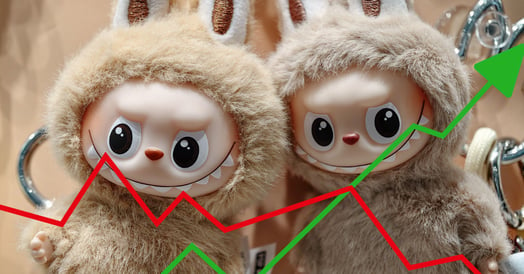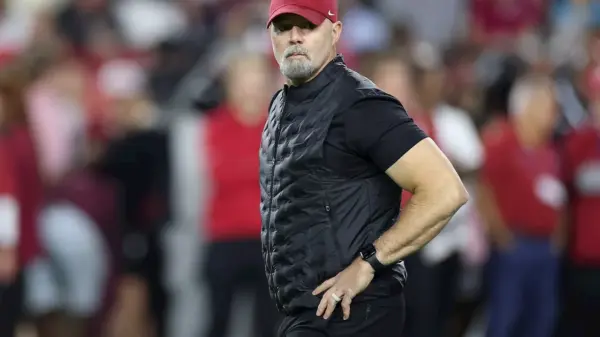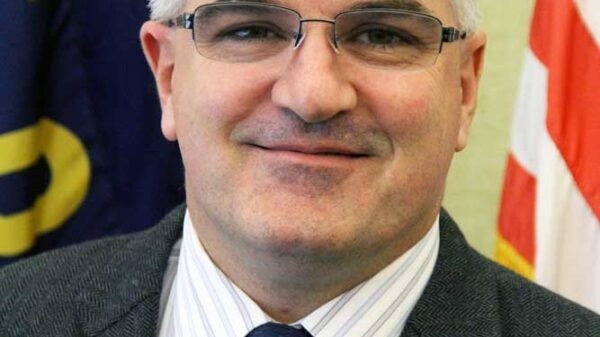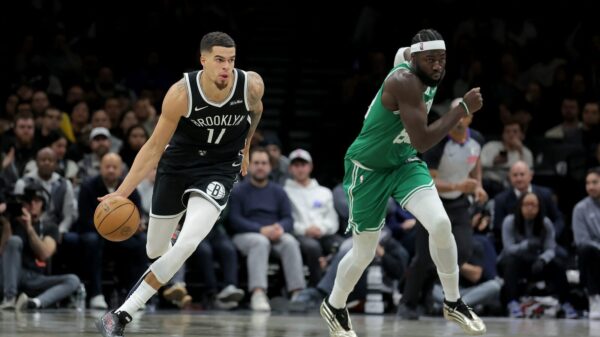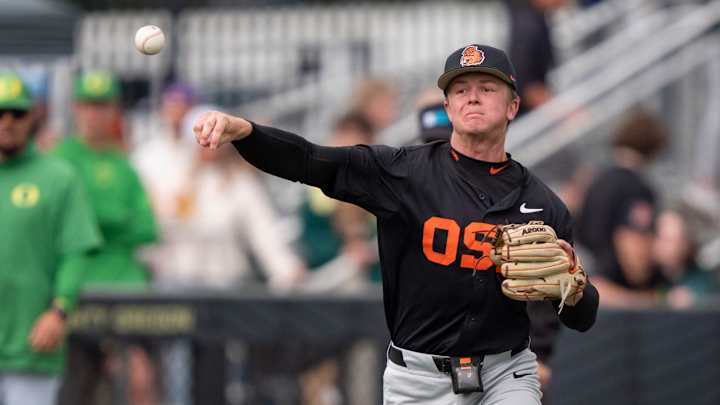Trent Caraway, a standout player for the Oregon State Beavers, has entered the transfer portal as the 2025 MLB Draft approaches. The California native posted a batting line of .267/.350/.470/.820, hitting 12 home runs and driving in 47 runs during his second season. With his current ranking as the 145th prospect by MLB Pipeline and 175th by Baseball America, Caraway faces a crucial decision regarding his future in baseball.
Caraway’s journey began when he joined the Beavers as a top-100 prospect out of high school. He made headlines by breaking the single-season hits record previously set by 2017 overall top pick Royce Lewis at Serra High. In his freshman season at Oregon State, Caraway delivered an impressive performance, posting a batting line of .339/.431/.516/.947 with two home runs and 10 runs batted in, showcasing a strong 130 wRC+.
As he transitioned into his sophomore year, Caraway made significant adjustments to his approach at the plate. He reduced his strikeout rate from 31.9% to 23.1% while increasing his walk rate from 8.3% to 10.5%. Despite these improvements, he finished the season with an overall 86 wRC+, indicating below-average offensive production.
According to MLB Pipeline, “He appeared to have lost his confidence.” While Caraway’s aggressive style resulted in swing-and-miss moments, he demonstrated a willingness to work counts effectively. His raw power remains a highlight, particularly his ability to hit to his pull side, although concerns about his approach and pitch recognition persist.
In the postseason, Caraway found his stride, earning the title of regional MVP at the Corvallis Regional. He made history by hitting six home runs during the postseason, the most ever by a Beaver in a single year. Baseball America highlighted his raw power and bat speed, noting that he generates significant force with his 6-foot-2, 200-pound frame, capable of achieving exit velocities in the 114 mph range.
As the draft approaches, Caraway’s future remains uncertain. Notably, he has not been projected as a first or second-round pick by major scouting outlets. This raises the question of whether he should pursue a transfer to another collegiate program or take the leap into professional baseball if drafted.
A transfer could provide Caraway with the opportunity for another strong season, potentially lowering his strikeout rate further and aiming for a 20-home run season. If he successfully elevates his performance, he could position himself as a top prospect in the 2026 draft. Conversely, if a Major League team provides an attractive signing bonus that exceeds any NIL offers he might receive, Caraway could opt to begin his professional career and adapt to the heightened pressures of the game.
Ultimately, the coming days will be pivotal for Trent Caraway as he navigates this critical juncture in his baseball career. The decisions he makes now could shape his future in the sport for years to come.
















